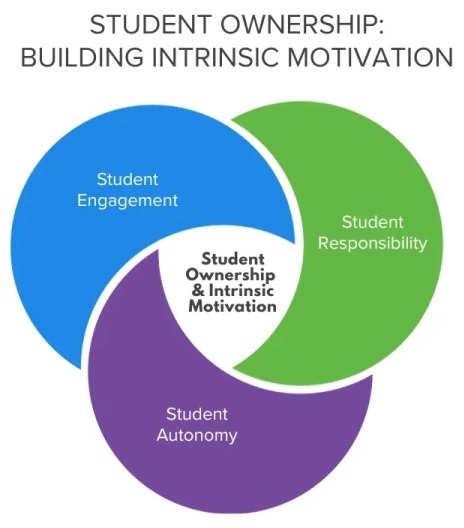The ideal classroom for educators is one where all of the students are motivated, engaged, and love learning for the sake of learning. Although they are harder to identify, it is simpler to nurture these kids who are genuinely eager to learn. You may assist students in developing intrinsic motivation that supports lifelong learning if your classroom is engaging, demanding, and rewarding. Before we discuss the critical role that simulations play here are a few strategies for helping students develop intrinsic motivation.
What Is The Difference Between Extrinsic And Intrinsic Motivation?
An action that you participate in because it fulfills you is known as intrinsic motivation. Instead of engaging in an activity because you want to receive a reward from someone else, you are doing it for its purpose. The action is rewarding in and of itself.

Source: collegereadiness.uworld.com
When we are driven to carry out an action or participate in a behavior because we hope to receive compensation or stay out of trouble, this is known as extrinsic motivation. You will act in a certain way because you anticipate receiving something in return or avoiding something unpleasant, not because you love it or find it rewarding.
Before moving to the topic, can we ask you a question? Do you follow us on Social Media? We regularly share upgraded educational content, tips, feedback, and more. Check us out by clicking the profiles here - Facebook / Twitter / LinkedIn / Pinterest / Instagram / YouTube
7 Strategies To Adopt For Boosting Student Motivation
Here are a few tips for teachers willing to boost student motivation should use:
1. Empower Students With Power Of Choice
While young pupils are unlikely to be involved in this kind of speech, college students do have a lot of alternatives. Learners are free to select, except under pressure from their fathers or other demands that are not relevant to this conversation. It is only appropriate that students demonstrate their research and dedication to the chosen sciences after they have made up their minds.
2. Establish Greater Goal
Putting more emphasis on mastery objectives than performance targets might encourage kids to embrace studying in and of itself. Instead of focusing on earning a given grade or ranking, mastery objectives stress the development of skills and understanding. According to studies, students who concentrate on mastery objectives are more likely to find learning enjoyable and to be driven to learn more on an internal level.
3. Reinvent Reward System
Using direct incentives is a clever way to get your students to do simple, unambiguous activities. Complete these instructions as quickly as possible to receive your badge. A strategy that isn't very effective for intricate non-linear tasks that call for increased creativity and unconventional thinking.
4. Avoid Negative Motivation
For certain disengaged people, the terrifying possibility of failure may be the appropriate stick, but it never works without a carrot. In any case, fear prevents sincere curiosity, comprehension, or opportunities for study. Instead of intimidating, utilize the situation.
5. Foster A Growth Mindset
Students who are encouraged to adopt a growth mindset are more likely to believe in their capacity to learn and advance. Students with a growth mentality are more likely to be naturally driven to study, according to research. Some people tend to give up on tasks before they even begin. A suggested learning goal might appear overwhelming until you take a chance. Ensure that the students have the necessary tools and a sense of confidence in their abilities to do their assignments.
6. Offer Feedback
Feedback that is provided in an educational, nonjudgmental, and practical manner has the potential to be a very effective motivator. Research indicates that pupils who get growth-oriented and progressive feedback are more likely to have an innate desire to learn more. Because educators hold a position of authority, keep in mind that everything they say to students may have a significant and lasting impact. Make good use of this information.
7. Teach Students To Learn
Sometimes, the entire process of acquiring and retaining knowledge as well as academic formalization matters more than just the course. When learners are prepared to absorb and process information for their gain, they activate the innate learning processes that would otherwise go unutilized. Reach them halfway and make data-driven navigation easier by leading them toward relevant offline and online resources, practical technologies, web-based applications, etc.
Help Your Students Start Growing
When you think about how helpful each of these things is in day-to-day life, you'll notice that intrinsic motivation helps students succeed in life outside of the classroom in addition to improving their academic performance. It could be difficult to inspire a desire for learning and growth rather than just ‘getting credits,’ but educators who have pursued any Teacher training course understand that a trip of a thousand miles always starts with one step.
We believe education should be accessible for everyone. That’s why we don’t charge for our blogs. Find the right course that will help you in your career with us, contact us at - 1800–212–6400. You can mail us at act@asiancollegeofteachers.com.
Written By : Sanjana















